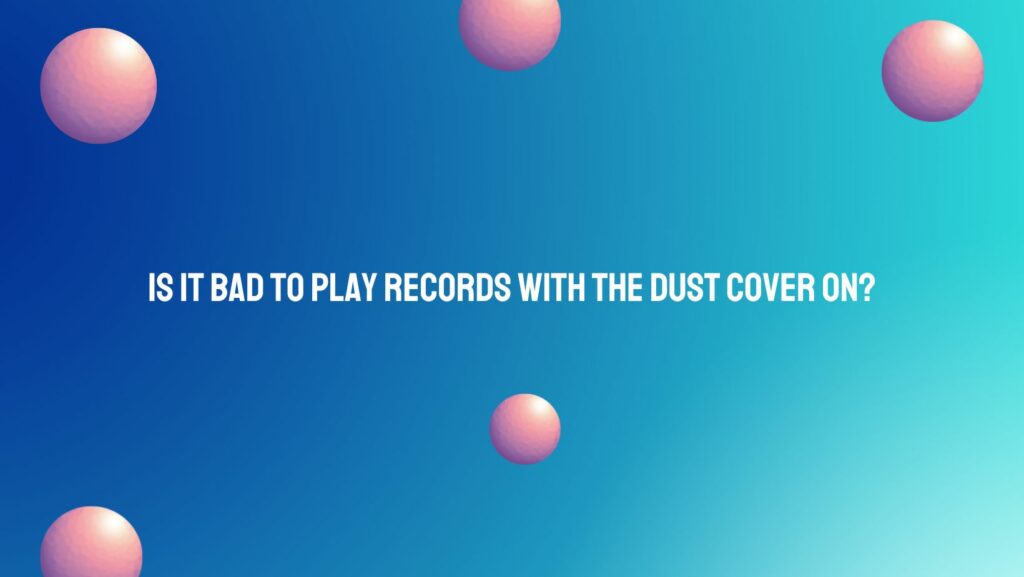Vinyl records, celebrated for their warm sound and tactile appeal, hold a special place in the hearts of music enthusiasts. Yet, amidst the rituals of vinyl playback, a common question arises: Is it bad to play records with the dust cover on? In this article, we delve into the debate surrounding this topic, dispelling myths and offering insights into the impact of dust covers on record playback.
The Role of the Dust Cover: Dust covers, also known as turntable lids or hoods, serve a dual purpose in vinyl playback. Primarily, they shield the turntable and records from dust, debris, and environmental contaminants when not in use. Additionally, dust covers help minimize acoustic feedback and reduce external vibrations that can affect sound quality during playback.
Dispelling the Myth: Contrary to popular belief, playing records with the dust cover on is not inherently harmful to vinyl playback. The presence of the dust cover should not significantly impact the sound quality or tracking performance of the stylus as it traverses the grooves of the record. In fact, many audiophiles and turntable manufacturers advocate for keeping the dust cover closed during playback to minimize acoustic disturbances and maintain optimal sound reproduction.
However, it is essential to exercise caution when playing records with the dust cover on, as improper positioning or interference with the tonearm can lead to mechanical issues and compromised playback quality. Ensure that the dust cover is fully open or positioned at an angle that allows unobstructed access to the record and tonearm during playback. Additionally, avoid placing objects or accessories on top of the dust cover, as this can cause unwanted vibrations and interfere with the stylus’s tracking ability.
Benefits of Using a Dust Cover: While playing records with the dust cover on may not be detrimental to vinyl playback, using the dust cover as intended offers several benefits in terms of record protection and sound quality. By keeping the dust cover closed when the turntable is not in use, you can safeguard your records from dust, dirt, and other environmental contaminants that can accumulate over time and compromise playback quality. Additionally, the dust cover helps preserve the aesthetic appeal of your turntable and records, maintaining their pristine condition for years to come.
Conclusion: In the realm of vinyl playback, the debate over playing records with the dust cover on continues to spark discussion among enthusiasts. While some may argue that it hinders sound quality and performance, the reality is that using the dust cover as intended poses minimal risk to vinyl playback. By exercising caution and adhering to proper positioning and maintenance practices, enthusiasts can enjoy the benefits of dust covers while preserving the integrity of their cherished vinyl collections. Ultimately, whether to play records with the dust cover on or off remains a matter of personal preference and practical considerations in the pursuit of optimal sound reproduction and record preservation.


